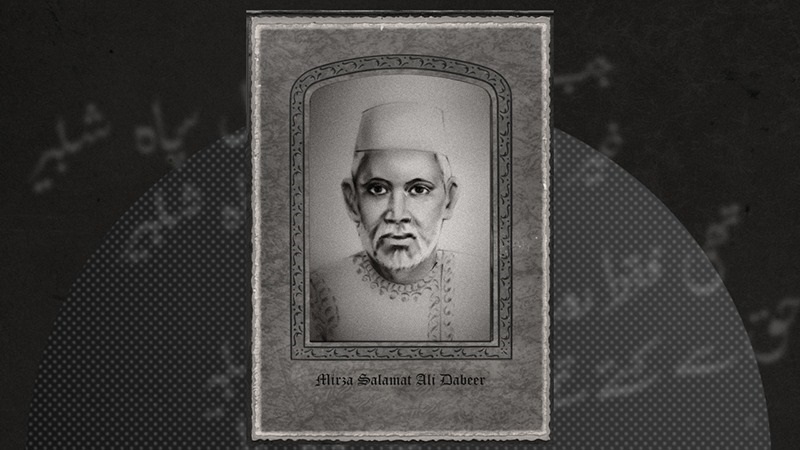Mirza Ghalib praised him as the pioneer of Marsiya poetry and said that there was no one like him. My mother would tell me about him each time our Urdu lessons turn into tales—such was the status of Mirza Dabeer in our lives.
According to an article by Aoun Hasan on Samaa.tv, it began when my mother would correct me as I read poetry. Some days these corrections would spin off into tangents on politics, history, religion. On other days, I would prod her to recite couplets, which I could quote on Twitter and Instagram as they fit the mood or were an apt comment on what was happening in the world.
Mirza Salamat Ali Dabeer was born in Delhi on August 29, 1803 and died on March 7, 1875 in Lucknow while Mir Babar Ali Anees was born in Faizabad the same year and died on December 10 in 1874, also in Lucknow.
The Marsiya is an elegiac poem that commemorates the martyrdom and valour of Hussain ibn Ali and his Comrades of Karbala and other members of the Ahlulbayt or the House of the Holy Prophet Muhammad (PBUH). Thorough knowledge of history and language is a prerequisite to understand the depth of a Marsiya Majlis and experience the attendant ‘lutf’ from its form.
Mirza Dabeer’s marsiya are recited in my mother’s hometown of Jais, Amethi in Uttar Pradesh which is famed for its marsiya reciters, Azadari and is known as the land of ulema. Her uncle had dedicated his PhD thesis “Urdu Marsiye ka Intiqa” thus: “To my homeland Jais where mothers recite marsiye to young ones.”
It is even said that when Mirza Dabeer would write a new Marsiya, it was sent to Jais for recitation in Muharram and even today the two main processions of Jais Azadari start with his Marsiya. On 10th Muharram, the well-loved “Jab hui Zuhar Talak Qatl Sipahe Shabber, Gair Asghar na Raha Noor-e Nigah-e Shabber…” is recited. Mir Anees is believed to have said that had Mirza Dabeer given this marsiya to him, he would have handed over all his writings in exchange. Similarly, the Chehlum begins with “Bala Utha ke Haram Karbala mein Aate Hain, Mareez Shaa ke Daru Shafa Mein Aate Hain.”
For Mirza Dabeer, the Marsiya was not merely an elegy but an art form. To demonstrate how firmly he believed this, he wrote a piece in which the last word of every line becomes the first word of the next line; this style is called Raddul ijz alas sadr.
Another masterpiece is in the style of Sanate gair mankhoot, which means an entire marsiya without using alphabets with nuktas or dots. Opposed to this style is the Sanate mankhoot in which all the alphabets used must have dots. My favourite one is Sannate jama style in which each line has one category of word.

